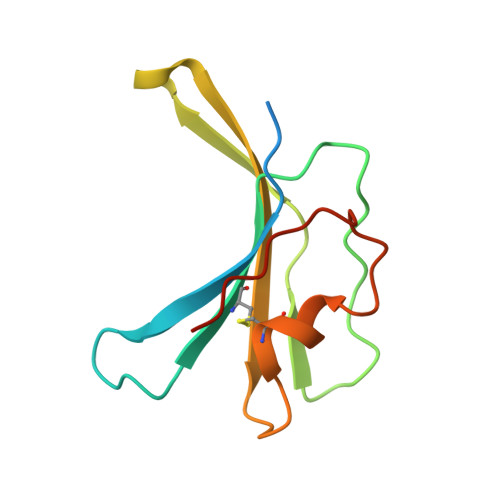Computational stabilization of T cell receptors allows pairing with antibodies to form bispecifics.
Froning, K., Maguire, J., Sereno, A., Huang, F., Chang, S., Weichert, K., Frommelt, A.J., Dong, J., Wu, X., Austin, H., Conner, E.M., Fitchett, J.R., Heng, A.R., Balasubramaniam, D., Hilgers, M.T., Kuhlman, B., Demarest, S.J.(2020) Nat Commun 11: 2330-2330
- PubMed: 32393818
- DOI: https://doi.org/10.1038/s41467-020-16231-7
- Primary Citation of Related Structures:
6U07 - PubMed Abstract:
Recombinant T cell receptors (TCRs) can be used to redirect naïve T cells to eliminate virally infected or cancerous cells; however, they are plagued by low stability and uneven expression. Here, we use molecular modeling to identify mutations in the TCR constant domains (Cα/Cβ) that increase the unfolding temperature of Cα/Cβ by 20 °C, improve the expression of four separate α/β TCRs by 3- to 10-fold, and improve the assembly and stability of TCRs with poor intrinsic stability. The stabilizing mutations rescue the expression of TCRs destabilized through variable domain mutation. The improved stability and folding of the TCRs reduces glycosylation, perhaps through conformational stabilization that restricts access to N-linked glycosylation enzymes. The Cα/Cβ mutations enables antibody-like expression and assembly of well-behaved bispecific molecules that combine an anti-CD3 antibody with the stabilized TCR. These TCR/CD3 bispecifics can redirect T cells to kill tumor cells with target HLA/peptide on their surfaces in vitro.
- Eli Lilly Biotechnology Center, 10300 Campus Point Drive, San Diego, CA, 92121, USA.
Organizational Affiliation:


















